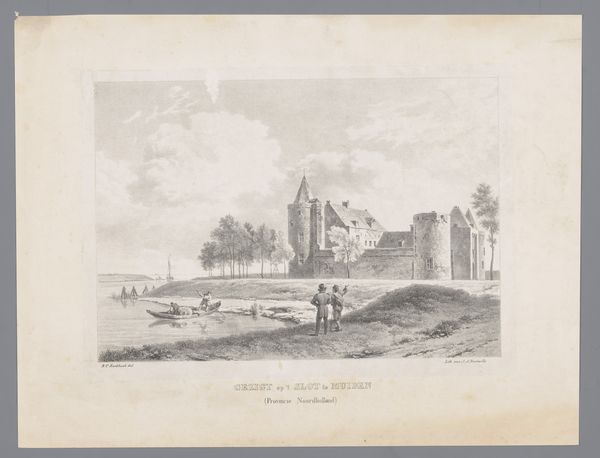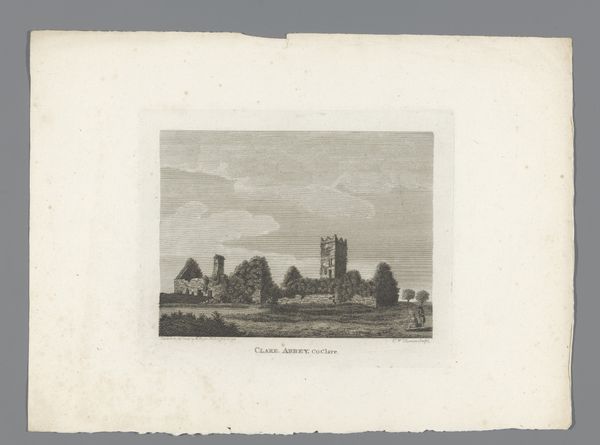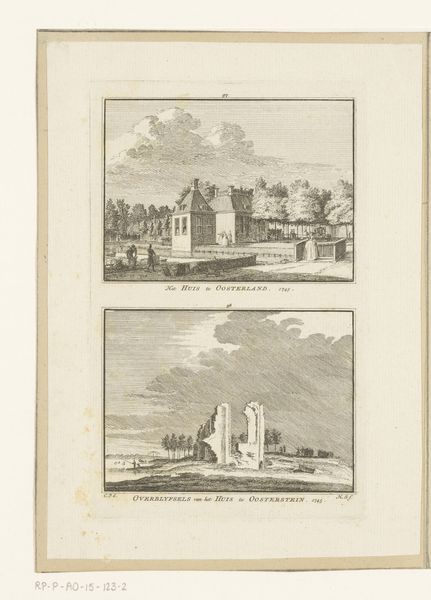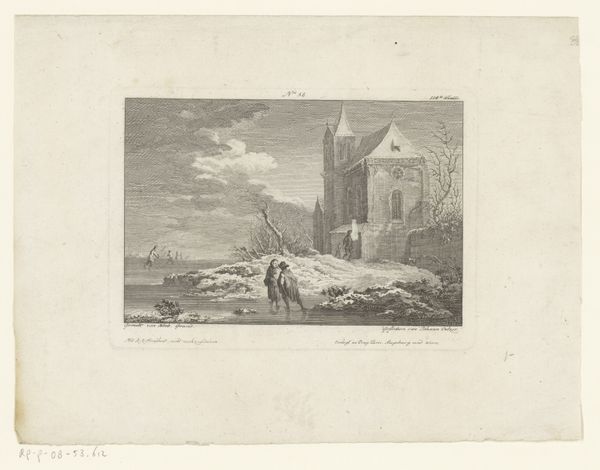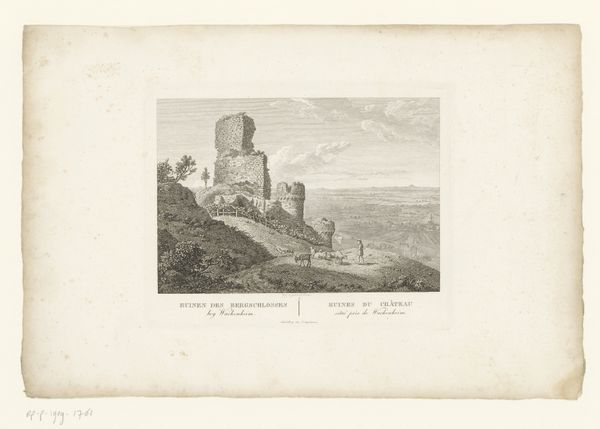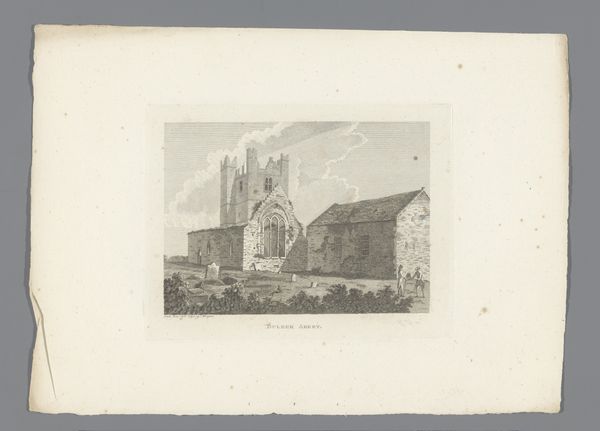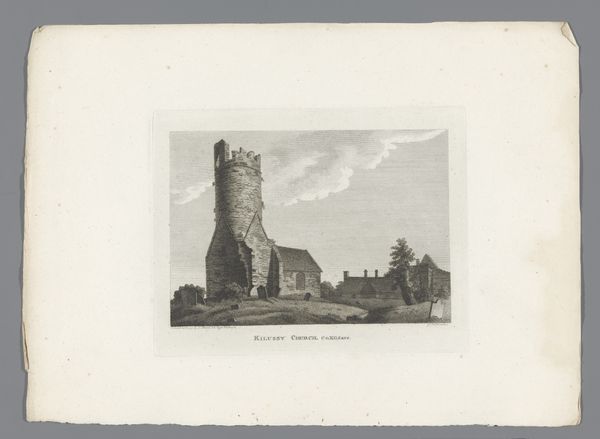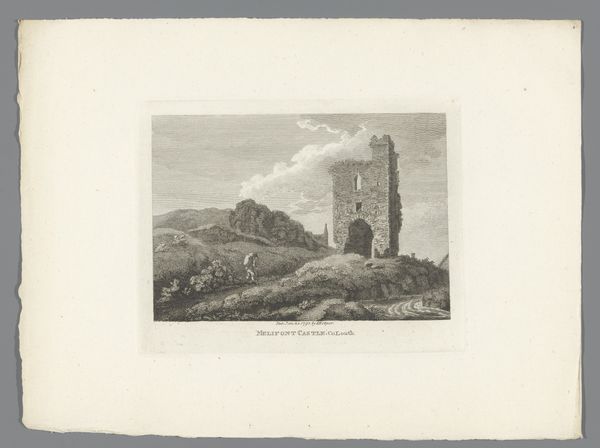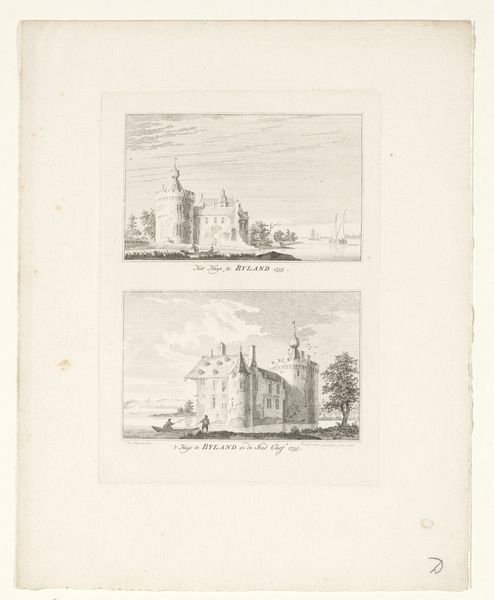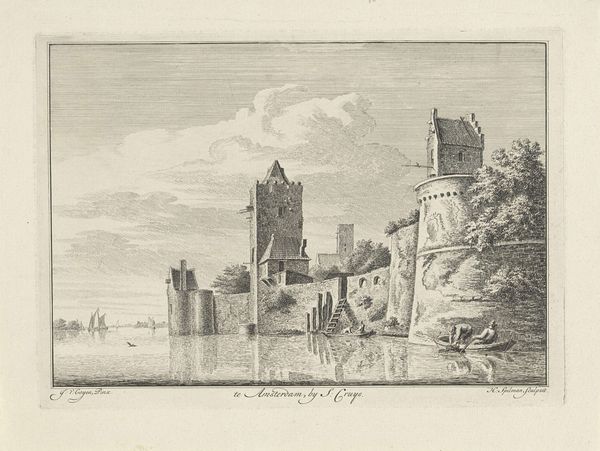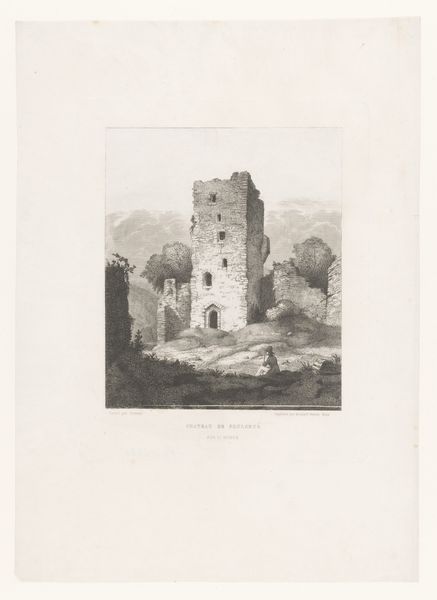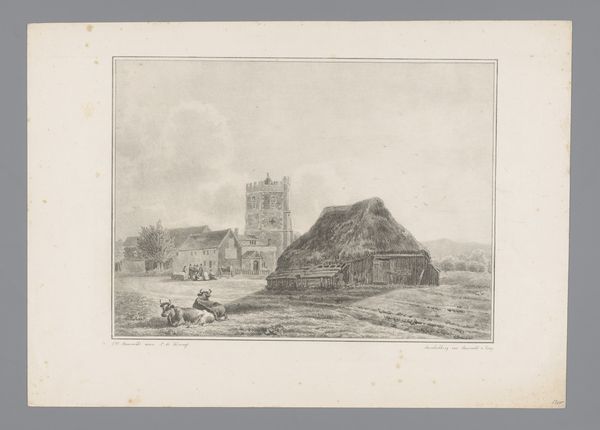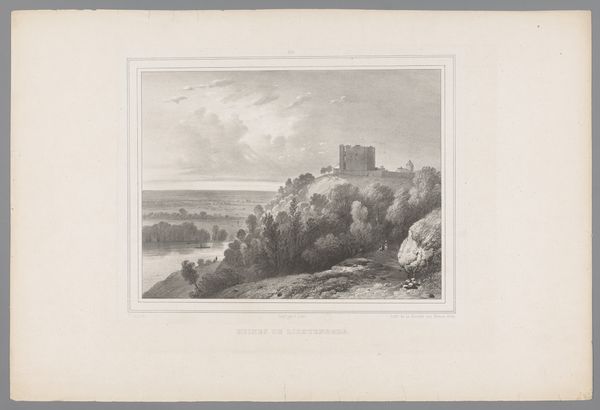
Gezicht op de kerktoren van Koudekerke en gezicht op de kerktoren van Westenschouwen, 1743 1754 - 1792
0:00
0:00
drawing, engraving
#
drawing
#
landscape
#
engraving
Dimensions: height 160 mm, width 103 mm
Copyright: Rijks Museum: Open Domain
Curator: Here we have Hendrik Spilman's combined engraving and drawing from the latter half of the 18th century, entitled "Views of the Church Towers of Koudekerke and Westenschouwen." Editor: It’s immediately striking how stark these towers are. Their verticality contrasts so strongly with the flat landscape; the textures, even in monochrome, evoke a feeling of dampness, a sort of stark openness. Curator: That dampness perhaps reflects the specific relationship these towns had with the sea and land. Koudekerke, in particular, had a constant struggle against coastal erosion, influencing its social and economic structures. Spilman captured these landmarks when concerns about the coastline were high. Editor: Yes, that vertical assertion against horizontal erosion is palpable! And, you know, the engraving style, those tightly controlled lines, they lend a real sense of melancholy, or perhaps the acceptance of this persistent weathering you describe. Note how he varies the densities of his mark-making to achieve atmospheric depth. Curator: I see it as stoicism, which reflects a broader 18th-century intellectual engagement. The engravings allow Spilman to democratize this sentiment. By making multiple prints, he makes this viewpoint widely available, thereby strengthening public resolve and maybe even directing support for regional development and defenses. Editor: You're right. Knowing that makes the compositions seem more dynamic. The line weights almost seem to vary based on the "importance" of various elements. And that soft grey sky! I find it beautiful. Curator: Understanding Spilman's work demands that we view these landscapes not just as aesthetic pieces but also as products of socio-political and technological conditions, particularly when considering Dutch maritime power. Editor: So true. What initially reads as an exploration of form and material also reflects, on closer examination, broader social narratives and concerns.
Comments
No comments
Be the first to comment and join the conversation on the ultimate creative platform.
